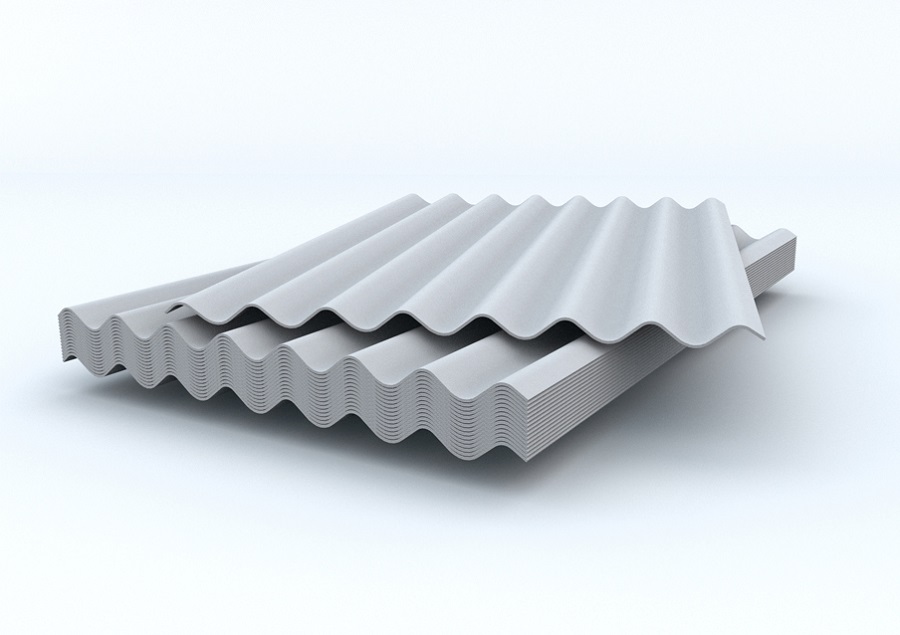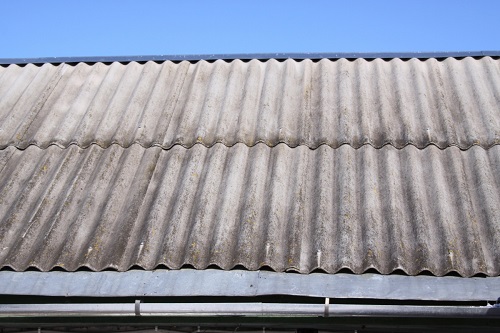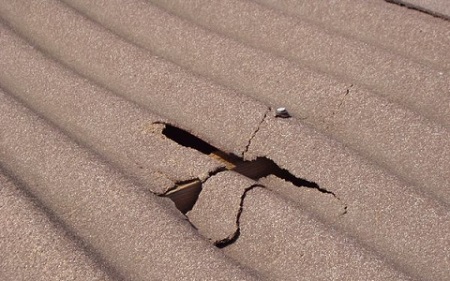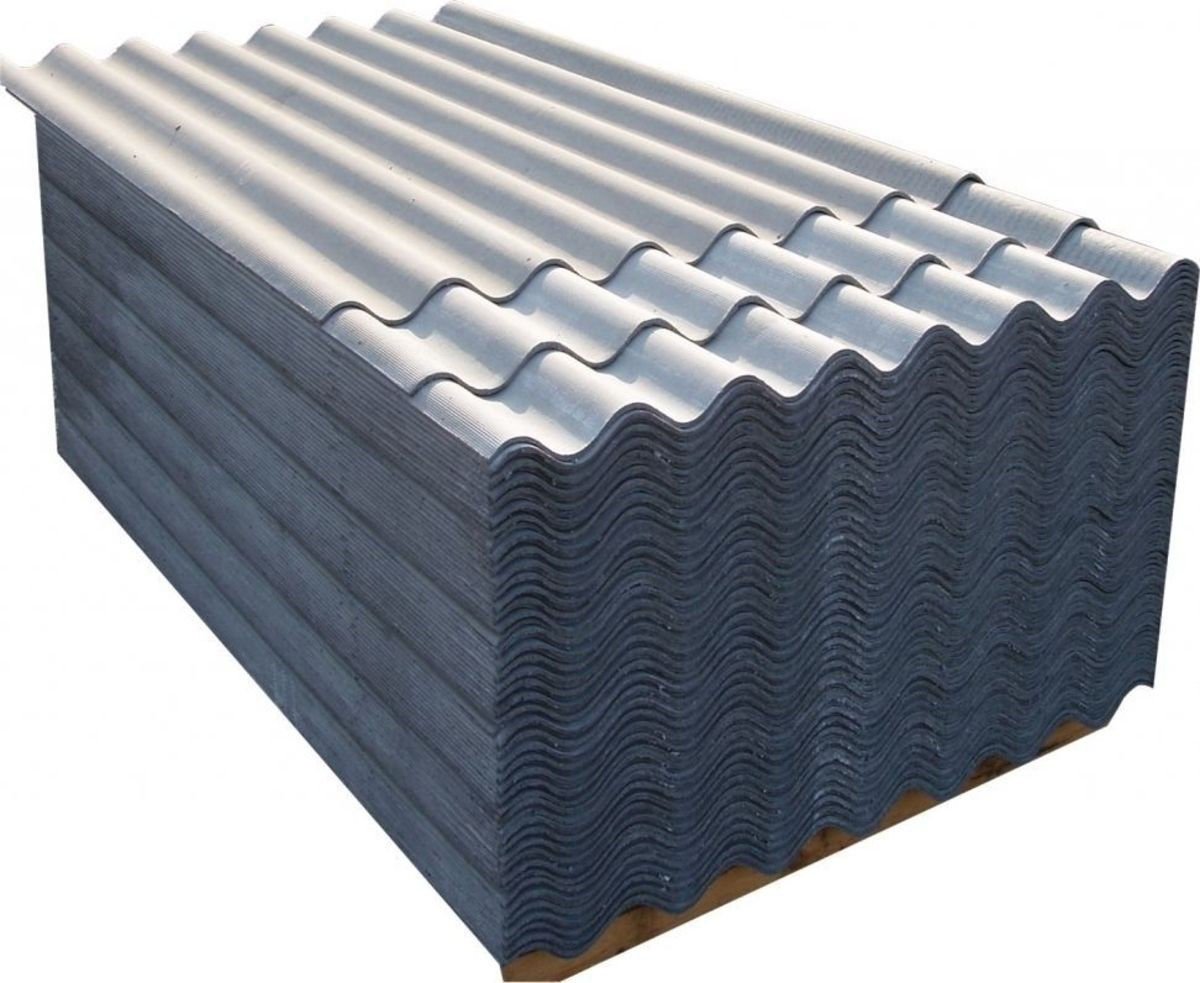
The most popular building material for home construction is slate. Despite its high-tech competitors, wave slate takes first place. In the construction of industrial buildings, it is very often used exactly wave slate, especially wave slate 8. This building material has a large thickness, and hence high strength. The most popular building material for roofing private and commercial buildings is slate. The wave slate, whose dimensions do not always coincide with European standards, leaves far behind high-tech competitors and takes first place when choosing roofing materials.
Content
Applying slate wave
At the current rate of production growth, wave slate is also widely used for the construction of industrial buildings, since the use of this building material provides the strength of the roof of buildings and structures, since wave slate 8 has a large thickness and wear resistance.
Characteristic and basic properties
Asbestos-cement sheets, despite their not attractive appearance, have many advantages over high-tech competitors:
- holding at a temperature difference (up to 50 cycles of freezing and thawing);
- cheap repair, replacement of sheets also does not take much time and high costs;
- it is easily processed by improvised tools, no special tools are needed;
- simple installation, which helps to quickly and efficiently perform work in a short time.

Since when laying slate, vertical rows should be shifted to each other, it will be appropriate to use sheets sawn in two through each row.
You can also pay attention to the fact that the wave of fiberglass slate is quite convenient to use, cheap and very durable. Most often it is used in private housing construction, while the leader is 8-wave slate, since its size allows you to make installation efficiently and without additional effort.
The asbestos-cement composition of the wave slate makes it a winner in terms of quality and reliability. Its not catchy appearance is also compensated by such factors as:
- fire safety (sheets belong to the group of non-combustible materials);
- the cost of exposure to the roof and slate is quite low.

The word "slate", used in everyday life, translated from German means "slate" or mineral natural material. In our area, for a long time, asbestos-cement sheets have been called slate. Since the advent of Euro-tiles, painted profiles as an alternative to asbestos cement or polymer slate, this traditional product has occupied 40% of the total production of roofing materials.
Slate wave also has some disadvantages, for example:
- heavy blows, hail, which can riddle the roof and cause serious damage to the roof;
- big weight: 1 sq. the roof meter has an average weight of 14-16 kg, which will require additional bearing force;
- moisture accumulation (if the building has a small slope of the roof, there may be a large accumulation of water), sprouting of moss, which will eventually lead to wear of the material itself.

Note! The slope of the roof should be at least 12%. The greater the slope, the longer the coating will last. Slate manufacturers give a guarantee of approximately 25-35 defrost cycles, but if the roof is correctly laid, the wave slate can last about 100 years without losing its positive qualities.
Technical Parameters of Wave Slate
Slate 8 wave thickness of 7.5 mm - the material is very durable.It surpasses other modifications:
- by high density;
- large bending load;
- other impact resistance profiles one and a half times.
Industrial production makes the following types of asbestos cement sheets:
- sheets with dimensions: 1200-1500 mm, length 2.5-3.5 mm, thickness 6.8.10 mm (flat slate);
- sawn flat slate, dimensions - 40x60 mm (tile or scales);
- 5 wave slate. Its practical value is doubtful, because it is an experimental development. With a wave step of 262.5 mm, the parameters are as follows: with a size of almost 2 square meters. meters (1.98) the area of the wave slate (covered area of the roof) due to overlaps is only 1.6 squares. As a result, productive consumption is at least 20%. The thickness of the wave slate is 5.8 mm;
- 6 wave slate. It is usually used to cover industrial buildings. They make dimensions only 54x200 mm, while the width is 1125 mm. One of the thickest types of material, its standard is 6 - 7.5 mm;
- 7-wave slate - this variety is one of the most popular, since 7-wave slate is very often used for the construction of individual housing;
- 8-wave slate - as a rule, use the same way as the 7-wave slate. The difference is that the 8-wave slate is wider and more convenient for styling.
Non-standard sizes are also produced, which are unified on a slate sheet. For example: for all types of length 1750 mm, width for 5 and 8 wave slate - 1130 mm, for 6 wave slate - 1125 mm, for 7 wave slate - 980 mm. It can also be noted that some manufacturers are cement -fibrous slate, they can offer special orders of sheets with a width of 0.92m - 1m, and a length of 0.625m - 3.5m. This product is SE (European standard), the peculiarity is that the wave height is 5.1 cm, and the distance between the waves reaches 17.7 cm.

It is important to remember that the covering and covering waves have different sheet sizes, if this factor is not taken into account when laying, the slate's waterproofing will be initially violated, which will lead to negative consequences. In order to avoid such situations, it is better to lay out the sheets before installation throughout the roof meter, which will simplify the installation process and help prevent such incidents.

Wave slate cannot be called one of the most “flexible” building materials, but due to the fact that it is easy to use in installation, even without specially designed tools, it will not disappear from the construction in the future. Slate wave is diverse and maintains a leading position in the market of roofing materials.
Modern technologies allow the production of color slate in a wide range of colors. It is red, gray, cherry, green. Colored slate is painted using special water-dispersion paints or pigments. Such coloring protects the slate from the harmful effects of the environment, and therefore it has an increased service life compared to conventional wave slate.





Alas, no comments yet. Be the first!